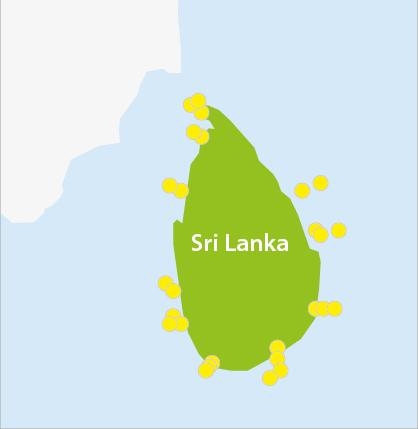Over one million Sri Lankans rely on the sea for their income, and about half of the animal protein intake of the island’s population comes from fish. The sea provides the inhabitants of the country with livelihoods, day-to-day nutrition, or both. Concerns after the 11 March 2011 Fukushima Daiichi nuclear power plant accident have highlighted the importance of monitoring radioactive substances in the oceans. But Sri Lanka had neither the equipment nor the expertise to measure radioactivity levels in its waters.
Sri Lankans were particularly concerned about the quality of the fish they were eating. “We were compelled to monitor the radioactivity of fish samples collected from the local catch, from the imported frozen fish, and from the canned fish imported from other countries,” says Vajira Waduge, Director of the Life Science Division of Sri Lanka’s Atomic Energy Board (AEB).
The IAEA launched a project to help 24 countries in the region to establish benchmarks for radioactivity levels, natural as well as artificial, in their coastal waters (see What is a benchmark?).
Waduge and his team detected caesium-137 in samples of imported canned fish, but only in insignificant levels. Low levels of caesium have been consistently detected in Sri Lankan waters and sediment, but only as a result of nuclear weapon testing fallout from the 1950s and 1960s. To help get the message across to the public that their seafood was safe, the fishing industry, importers, and the AEB launched an advertising campaign through awareness programmes, Waduge said.
Getting the tools
Prior to the start of the project, the AEB had basic gamma spectrometry analysis capabilities, but it could not carry out any marine sample analysis, which is necessary for establishing a database on marine radioactivity.
Through IAEA workshops and training the AEB established sampling methodologies and analytical procedures — allowing it to monitor existing radioactivity levels in seabed sediments, seawater, sea fish and seaweeds.
Subsequently, the AEB was able to secure funds from the government to procure new, more sophisticated equipment — enabling its staff to pick up very slight traces of radionuclides and establish benchmark data. “The instrument has been of great help in sample analysis because of its high capacity,” said Waduge. Collaboration with the Marine Environment Protection Authority has been one of the key points in the success of the project in Sri Lanka, he added.
We were compelled to monitor the radioactivity of fish samples.




